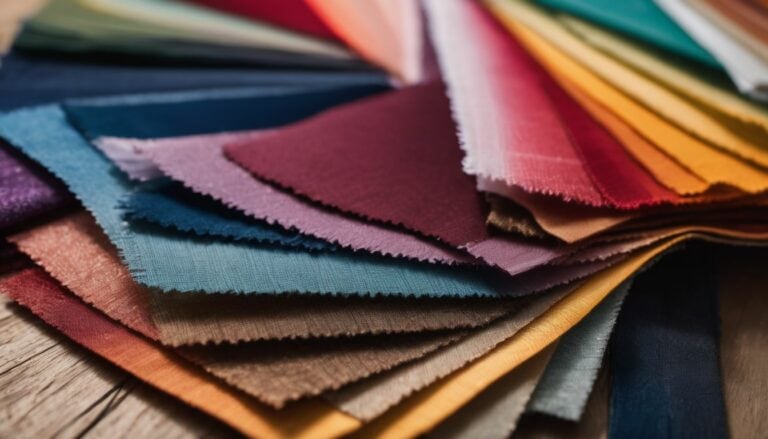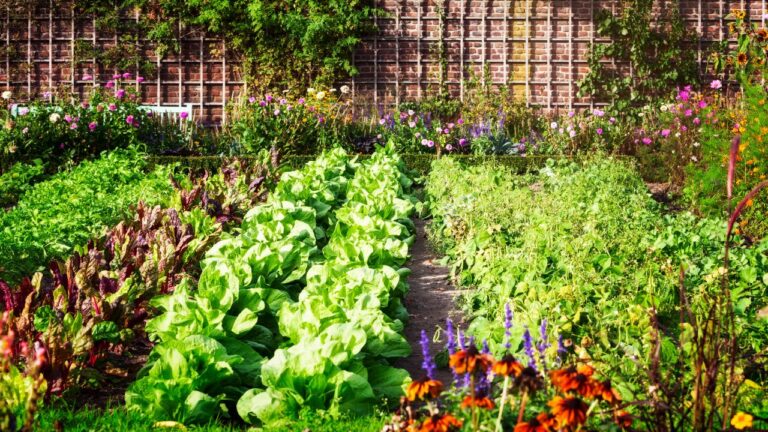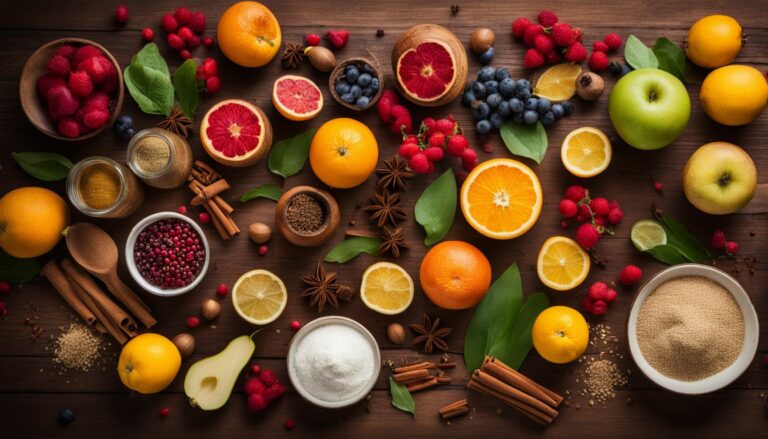7 Creative Alternatives to Fabric Dye: Eco-Friendly Solutions
Is your fabric looking dull, and that old dye isn’t just cutting it? Almost 90% of clothes and textiles are dyed using synthetic pigments which often harm the environment. This post is here to give you a fresh perspective on fabric coloring by exploring healthier alternatives to fabric dye.
Get ready for vibrant colors without damaging Mother Earth!
Key Takeaways
- Natural dyes, such as turmeric and henna, are eco-friendly alternatives to traditional fabric dyes.
- Oxygen – based bleaching can remove color from fabrics without harmful chemicals and prepare them for further dyeing processes.
- The DyeCoo waterless dyeing method uses carbon dioxide instead of water, reducing environmental pollution and saving energy.
- Using natural dyes is healthier for the environment, produces unique colors, and supports sustainable practices in the textile industry.
Traditional Fabric Dyeing Methods

There are several traditional fabric dyeing methods that have been used for centuries to color textiles, including natural dyeing methods, oxygen-based bleaching method, and the DyeCoo waterless dyeing method.
1. Natural Dyeing Method

You can make natural dyes from plants. This method is old but still works well. You use leaves, roots, or fruits to get the colors. Some popular choices are onions for yellow and berries for red and purple.
The fabric soaks in a pot of hot water with the plant parts. It stays there until it changes color. Natural dyeing does not harm the environment like chemical dyes do.
2. Oxygen Based Bleaching Method

The oxygen-based bleaching method is a traditional fabric dyeing technique that uses chemicals like hydrogen peroxide or sodium percarbonate to remove color from fabrics. This method is commonly used to lighten or whiten textiles before they are dyed with other colors.
It is often used on natural fibers like cotton, linen, silk, and wool. Oxygen-based bleaching can also be used on synthetic fabrics like polyester and rayon.
One benefit of this method is that it does not rely on harsh chemicals or toxins to achieve its results. Instead, it utilizes the power of oxygen to break down and remove colors from the fabric.
This makes it a safer and more environmentally friendly alternative to some other chemical dyeing methods. Additionally, because it only removes color without adding new ones, the original integrity of the fabric remains intact.
While oxygen-based bleaching may not provide vibrant or long-lasting colors on its own, it plays an important role in preparing fabrics for further dyeing processes. By removing existing color from textiles, it creates a blank canvas for other dyes to adhere to and produce desired shades.
3. DyeCoo Waterless Dyeing Method
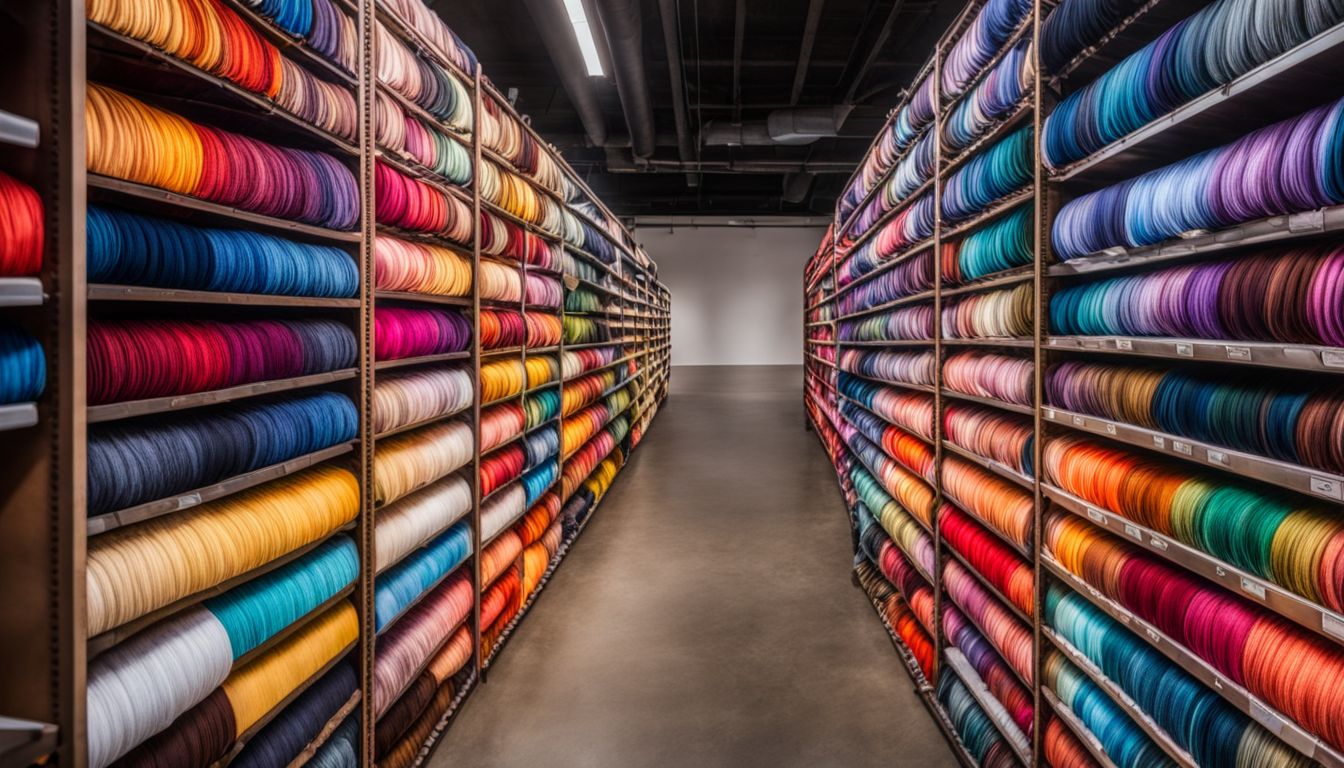
DyeCoo Waterless Dyeing Method is an innovative and sustainable alternative to traditional fabric dyeing methods. Unlike conventional dyeing processes that require a significant amount of water, the DyeCoo method uses carbon dioxide (CO2) as the dye carrier.
This eliminates the need for water altogether, resulting in zero wastewater discharge.
Not only does this method save water, but it also reduces energy consumption and chemical usage. The DyeCoo machine pressurizes CO2 until it becomes “supercritical,” which allows it to penetrate deep into the fabric’s fibers and bond with the textile dyes.
Afterwards, excess CO2 is easily recovered and reused in future dyeing processes.
The DyeCoo Waterless Dyeing Method offers several benefits. Firstly, it drastically reduces environmental pollution by eliminating wastewater containing harmful chemicals from entering rivers and streams.
Secondly, it saves a tremendous amount of water resources that can be better utilized elsewhere. Lastly, by using supercritical CO2 as a solvent, this method avoids the use of toxic chemicals commonly found in traditional synthetic dyes.
Eco-Friendly Alternatives to Fabric Dye
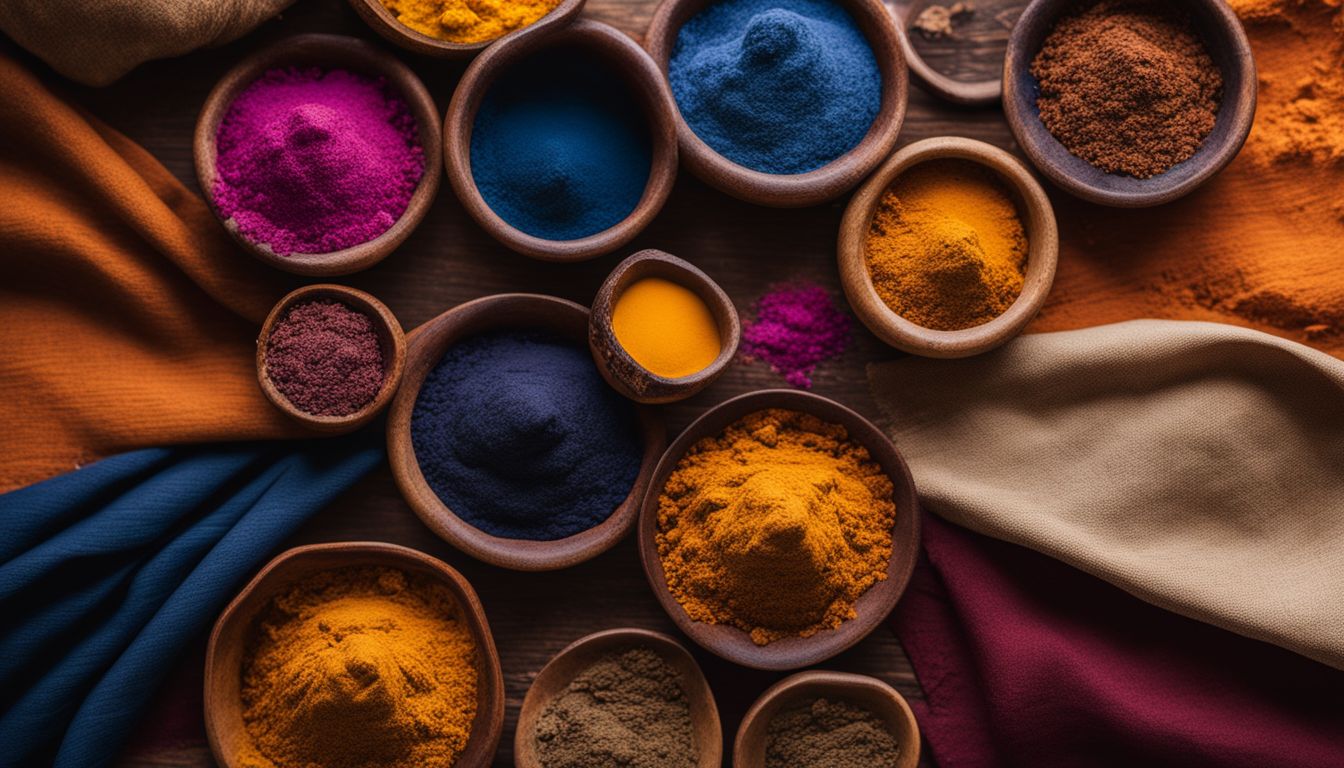
Turmeric, henna, indigo, and cochineal are eco-friendly alternatives to traditional chemical dyes.
4. Turmeric
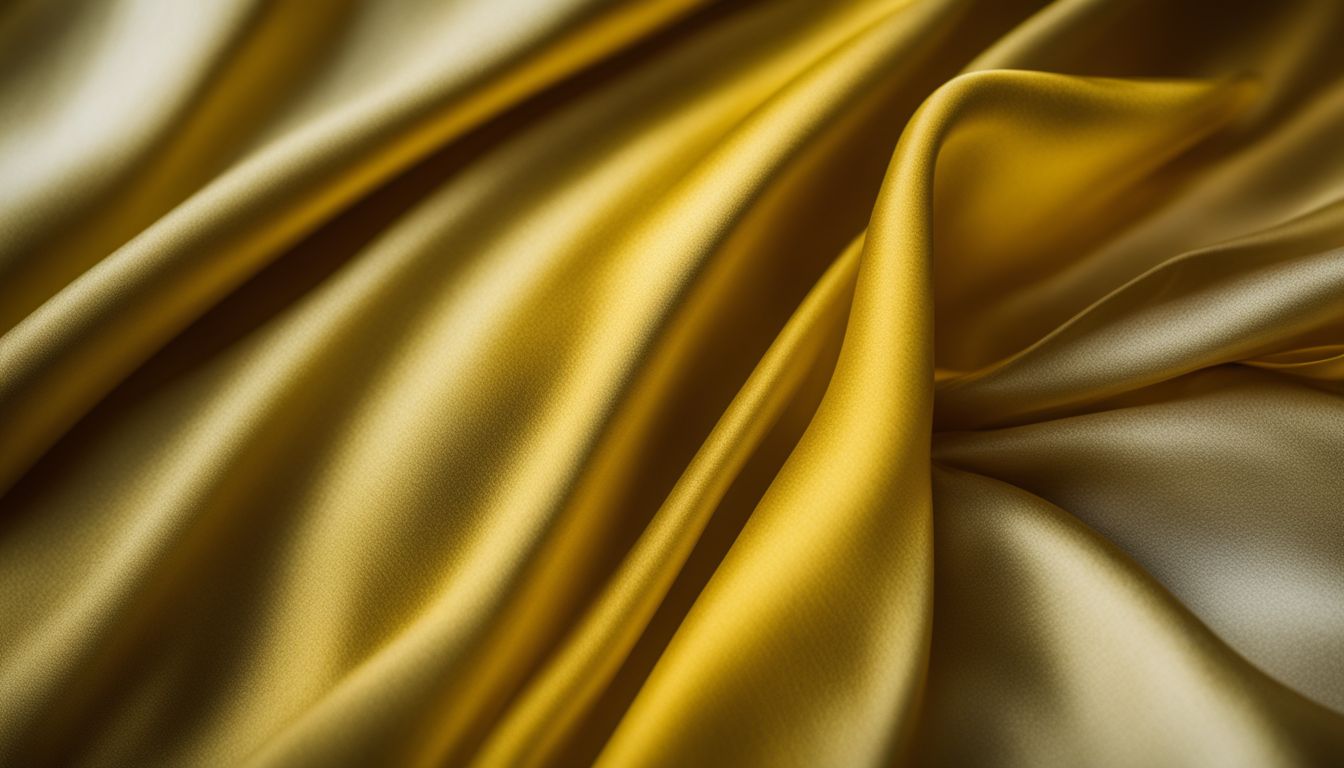
Turmeric is a natural alternative to chemical dyes that can give fabrics a beautiful yellow color. It is safe and eco-friendly, making it a great choice for those who want to avoid synthetic pigments.
Turmeric works best on cotton, linen, and silk fabrics, but it can also be used on wool. You can easily make turmeric dye at home using ingredients from the grocery store. Just boil water with turmeric powder, add your fabric and let it simmer for about an hour to achieve vibrant results.
Using turmeric as a fabric dye is a sustainable and non-toxic option that allows you to create unique colors while reducing the environmental impact of traditional dyeing methods.
5. Henna
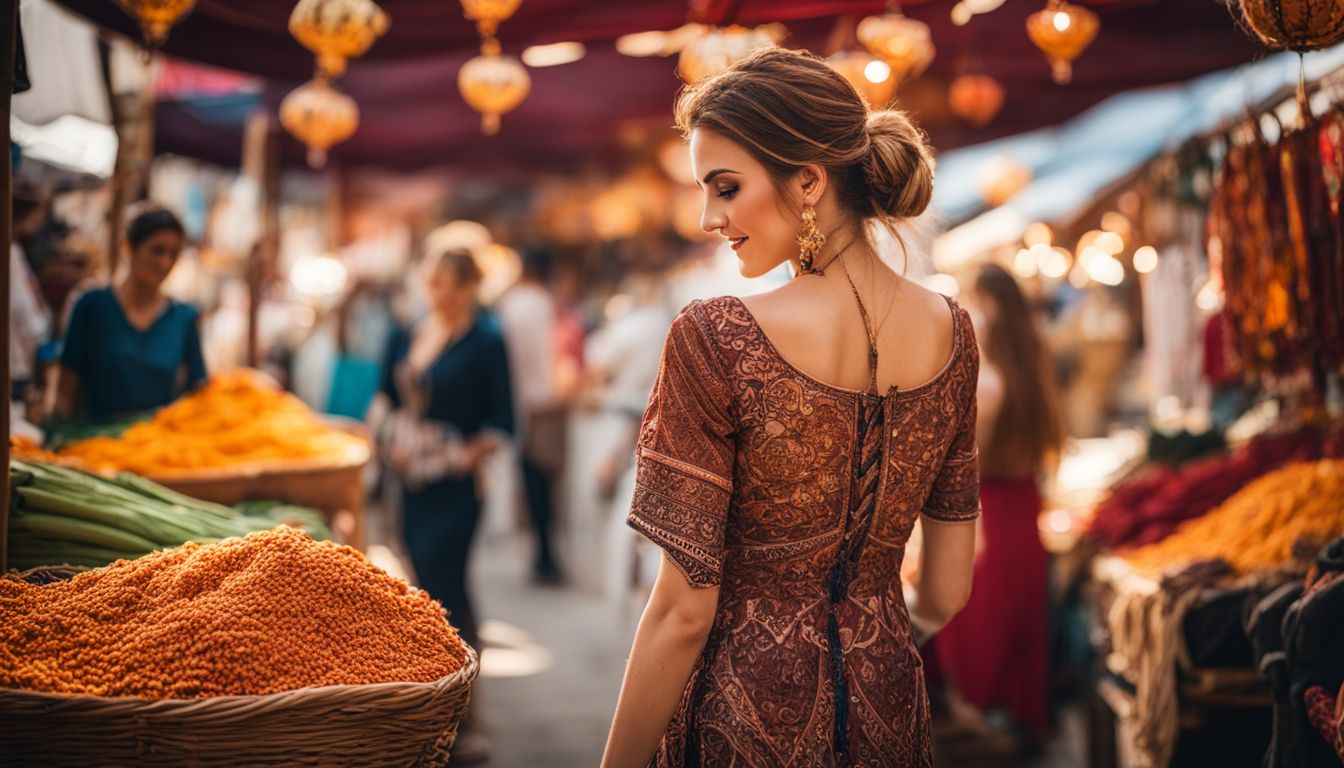
Henna is a natural dye that can be used as an alternative to chemical dyes for coloring fabrics. It works well on materials like polyester, nylon, silk, and wool. Henna is made from the leaves of the henna plant and has been used for centuries in traditional practices like body art and hair dyeing.
When used on fabrics, henna creates beautiful earthy tones ranging from reddish-brown to orange-brown. Additionally, henna is safe to use and does not contain harmful chemicals found in synthetic dyes.
By using henna as a fabric dye, you can create unique designs while also reducing your environmental impact.
6. Indigo

Indigo is another natural dye that can be used as an eco-friendly alternative to chemical dyes. It is derived from the leaves of the indigo plant and has been used for centuries to color textiles.
Indigo produces beautiful shades of blue, ranging from pale sky blue to deep navy. The dyeing process involves fermenting the leaves to release the pigment, which is then mixed with a reducing agent and applied to the fabric.
Indigo dye is commonly used for denim production but can also be applied to other fabrics like cotton, linen, silk, and wool. Using indigo as a natural dye not only creates unique and vibrant colors but also helps support sustainable and ethical practices in the textile industry.
7. Cochineal

Cochineal is a natural dye that comes from insects called cochineal bugs. These bugs are found on cactus plants in Central and South America. Cochineal dye produces vibrant red, pink, and purple colors that are long-lasting and fade-resistant.
It can be used to dye various fabrics like cotton, silk, wool, and even synthetic materials. Cochineal is considered safe and eco-friendly because it does not contain harmful chemicals or toxins.
Using cochineal as an alternative to chemical dyes helps reduce the environmental impact of the textile industry while creating beautiful and sustainable colored fabrics.
Benefits of Using Natural Dyes
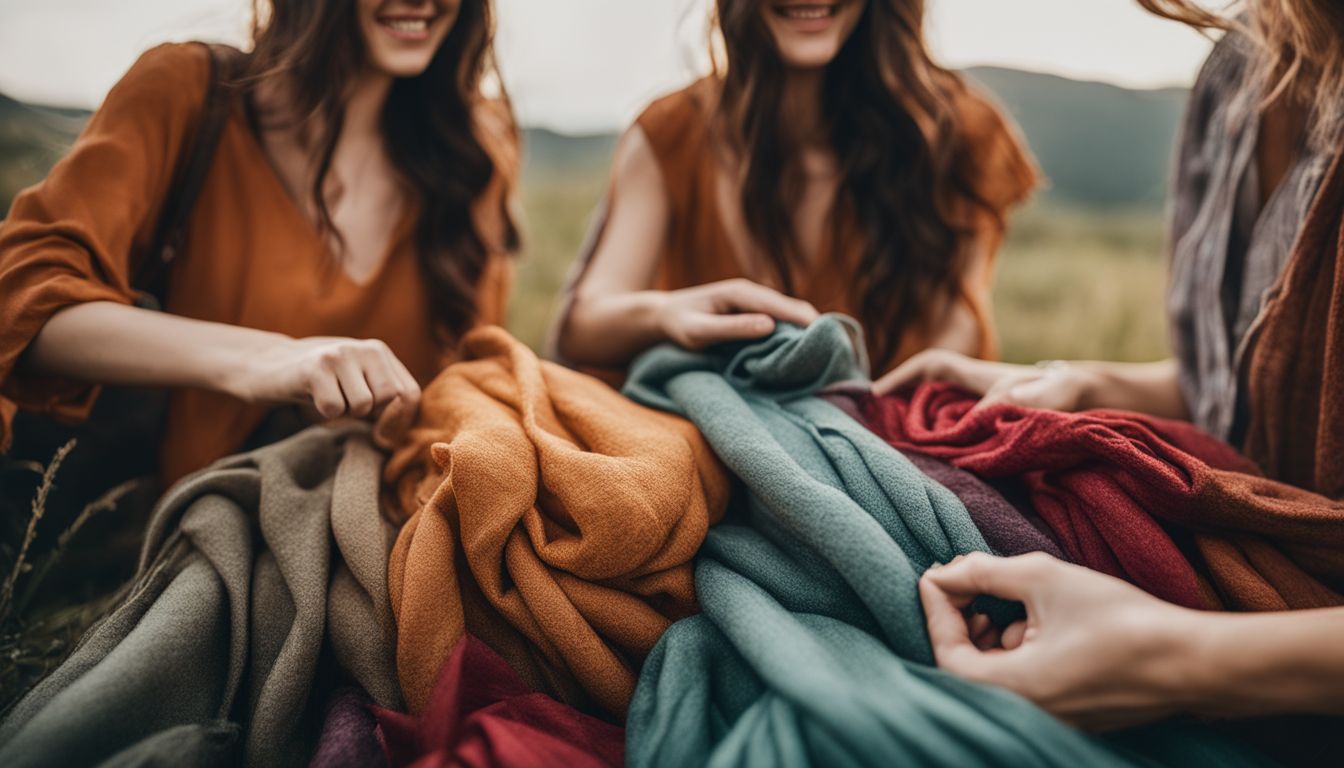
Using natural dyes offers several benefits, including being healthier for the environment and human health, producing unique and beautiful colors, and supporting sustainable and ethical practices.
Healthier for the environment and human health

Using natural dyes for fabric is not only better for the environment, but also safer for our health. Synthetic dyes used in traditional methods often contain harmful chemicals that can have negative effects on both the environment and human health.
These chemicals can pollute water sources and harm aquatic life. They can also cause skin irritation and allergies when they come into contact with our skin. By using natural dye alternatives, such as turmeric or henna, we can reduce the environmental impact of fabric dyeing and minimize the risk of exposure to harmful substances.
Natural dyes are biodegradable and less toxic, making them a healthier choice for both us and the planet.
Unique and beautiful colors

Natural dyes offer a wide range of unique and beautiful colors for fabric. When using plant-based materials like turmeric, henna, indigo, and cochineal, you can achieve vibrant hues that are not only visually appealing but also environmentally friendly.
Additionally, these natural dyes can create subtle variations in color tones, giving your fabrics a truly one-of-a-kind look. Remember that by choosing eco-friendly dye alternatives, you not only contribute to the reduction of harmful chemicals in our environment but also support sustainable practices in the textile industry.
Supports sustainable and ethical practices
Using natural dyes for fabric supports sustainable and ethical practices in the textile industry. Synthetic dyes can harm the environment and human health, as they often contain toxic chemicals that pollute water sources.
By opting for natural alternatives like turmeric, henna, indigo, and cochineal, we can reduce our impact on the planet. These plant-based dyes are safe to use and biodegradable, making them a healthier choice for both us and the Earth.
Additionally, supporting sustainable dyeing practices helps promote environmentally conscious manufacturing processes in the fashion industry.
How to Use Natural Dyes
To use natural dyes, begin by preparing the fabric through washing and mordanting processes. Then, choose a dyeing technique such as immersion dyeing or tie-dyeing to achieve different effects.
Finally, fix the dye onto the fabric through heat setting or natural means before properly caring for the dyed fabric to maintain its color vibrancy and longevity.
Preparation of fabric
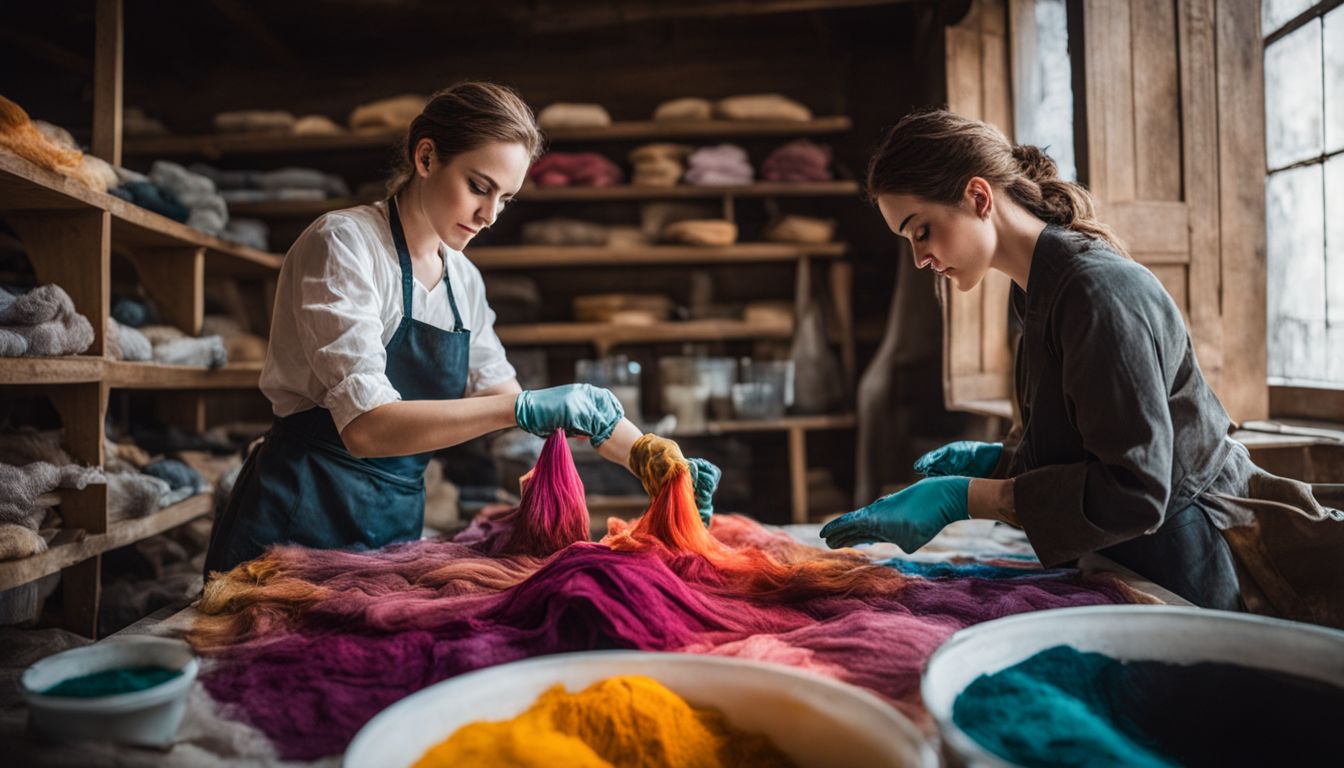
Before dyeing fabric with natural dyes, it’s important to prepare the fabric properly. Start by washing the fabric thoroughly using a mild detergent to remove any dirt or chemicals that may interfere with the dye absorption.
If you’re working with cotton, linen, or any other cellulose-based fibers, you can also soak the fabric in a combination of water and soda ash to enhance dye uptake.
Once your fabric is clean, decide on the desired color intensity and wet it before applying the natural dye. You can do this either by soaking it in water or spraying water onto the fabric surface.
This step helps ensure even distribution of the dye and prevents splotchy results.
To make sure your fabrics absorb as much color as possible, use mordants before applying natural dyes. Mordants are substances that bind dyes to fibers, improving colorfastness and longevity.
Common mordant options include alum (potassium aluminum sulfate) for plant-based dyes like turmeric and cochineal; iron for darker shades; and vinegar for acid dyes like indigo.
Dyeing techniques
To dye fabrics using natural dyes, there are a few techniques you can try. First, prepare the fabric by washing it thoroughly and soaking it in a mordant solution made from salt or vinegar to help the dye adhere better.
Then, choose your preferred method of dyeing. One technique is called immersion dyeing, where you fully submerge the fabric into a pot of simmering natural dye and let it soak for an extended period of time.
Another technique is called bundle dyeing or eco-printing, which involves wrapping the fabric around plant materials, securing them tightly with string or rubber bands, and steaming or boiling the bundle to transfer the colors onto the fabric.
You can also experiment with dip-dyeing or tie-dye techniques using natural dyes. Once your fabric has absorbed enough color, rinse it gently without rubbing too much to prevent any bleeding.
Fixing and caring for the dyed fabric
After dyeing your fabric using natural dyes, it’s important to properly fix and care for the dyed fabric to ensure that the colors stay vibrant and don’t fade. To fix the dye, you can rinse the fabric in cold water until the water runs clear.
Then, soak it in a mixture of vinegar and water for about 30 minutes before rinsing again. This helps set the color and prevent bleeding. When washing your dyed fabric, use mild detergent and avoid harsh chemicals or bleach as they can strip away the color.
It’s also best to wash it separately from other items to prevent any potential transfer of color. Instead of machine drying, air dry your dyed fabric to preserve its colors for longer.
Conclusion

In conclusion, using natural dyes is a great alternative to traditional fabric dyeing methods. Not only do they provide unique and beautiful colors, but they are also healthier for the environment and human health.
By opting for eco-friendly dye alternatives, we can contribute to sustainable practices in the textile industry and reduce our impact on the planet. So why not give natural dyes a try and add some color to your fabrics in a safe and environmentally conscious way?.
FAQs
1. Are there any alternatives to fabric dye?
Yes, there are several alternatives to fabric dye, including natural dyes made from plants and vegetables, fabric markers or paints, and tie-dye techniques using household materials.
2. Can I use food coloring as an alternative to fabric dye?
Yes, food coloring can be used as an alternative to fabric dye. However, it may not be as long-lasting or vibrant as specialized fabric dyes.
3. How do I use natural dyes on fabrics?
To use natural dyes on fabrics, you can make a dye solution by boiling plant matter like onion skins or berries in water and then soaking the fabric in the cooled mixture for a period of time.
4. What materials can I use for tie-dyeing without fabric dye?
You can use materials such as rubber bands and household items like coffee grounds or turmeric powder to create tie-dye patterns on fabrics without using traditional fabric dyes.




